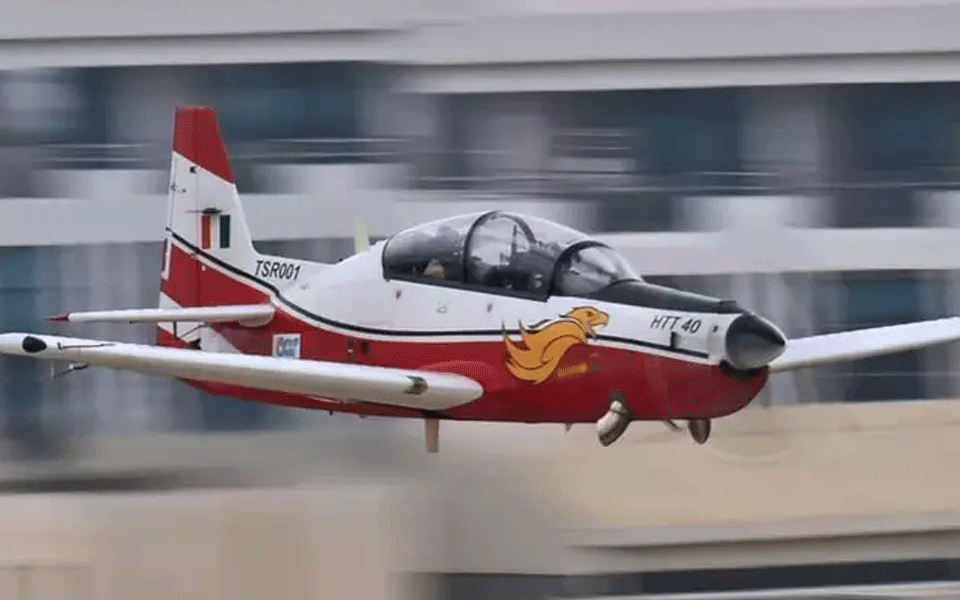Bengaluru, Nov 9: In a major boost to defence PSU HAL, its Hindustan Turboprop Trainer (HTT 40), a Basic Trainer Aircraft, commenced its most awaited phase of the "spin test" by successfully entering into two-turn spin and subsequently recovering with the appropriate controls.
The aircraft was piloted by Gp Capt (Retd) K K Venugopal, DGM-Test Pilot from front cockpit and Gp Capt S Chaki (Retd), Sr Test Pilot (FW) from rear, a Hindustan Aeronautics Limited (HAL) release said.
According to HAL, the spin testing is the most crucial and challenging aspect of flight testing of any aircraft development programme.
HALs Aircraft Research and Design Centre (ARDC) had conducted extensive wind tunnel testing and mathematical model analyses to arrive at the spin characteristics of the aircraft.
The entire study was put to test during the first few moments of spin testing, it said.
HAL CMD R. Madhavan said the successful start of the spin testing gave a boost to HAL and also restored its credibility in successfully designing a spin worthy aircraft.
Arup Chatterjee, Director (Engineering and R&D) said the spin completion was the last metric which needed to be accomplished before the aircraft entered service.
"As a matter of fact, HTT 40 exceeds the Preliminary Services Qualitative Requirements (PSQR) on most fronts and offers a technologically advanced product than its competitor, Chatterjee said.
HAL said the project started its detail design in August 2013 with internal funding and quickly made its way to the spin tests in matter of five years.
The Defence Acquisition Council (DAC) has approved procurement of 70 Basic Trainer Aircraft from HAL.
Let the Truth be known. If you read VB and like VB, please be a VB Supporter and Help us deliver the Truth to one and all.
Tumakuru (PTI): Karnataka Home Minister G Parameshwara on Saturday said his recent remarks on the demolition of properties linked to those involved in narcotics trade were "misunderstood and misinterpreted".
His clarification follows remarks made two days ago on the government's uncompromising crackdown on the drug menace, including action against properties linked to foreign nationals allegedly involved in drug trafficking.
"It is unfortunate. It is taken in the wrong sense. I didn't mean that tomorrow itself I am going to send bulldozers and demolish the houses. That was not my intention. It was wrongly taken," he told reporters here.
Responding to Congress MLC K Abdul Jabbar's question in the legislative council on the growing drug menace in Bengaluru, Davangere and coastal districts, the minister on Thursday detailed the extensive enforcement measures initiated since the Congress government assumed office.
Pointing to the involvement of some foreign nationals, the minister had said, "Many foreign students from African countries have come to Karnataka. They are into the drug business. We catch them and register cases against them, but they want the case to be registered because once the case is registered, we cannot deport them."
"We have gone to the extent of demolishing the rented building where they stay," he had said.





